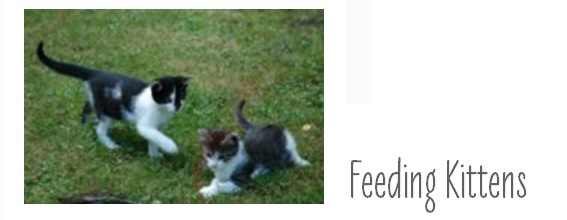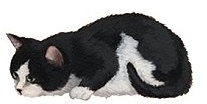
 The raw diet premix TCPremix is intended for all life stages. The raw meat diet made with our premix reflects your cat’s natural dietary habits, and as such is suitable for all ages including kittenhood – helping your new baby off to the right start.
Kittens will easily make the transition to the raw meat diet. In fact, they often show a true craving for it and act euphoric when presented with it.
The raw diet premix TCPremix is intended for all life stages. The raw meat diet made with our premix reflects your cat’s natural dietary habits, and as such is suitable for all ages including kittenhood – helping your new baby off to the right start.
Kittens will easily make the transition to the raw meat diet. In fact, they often show a true craving for it and act euphoric when presented with it.
In addition to their mothers’ milk, all baby mammals in nature receive the very SAME food as adult animals. As there are no mice specifically formulated by nature to feed only kittens, we makes only one premix to meet the nutritional needs of cats of all ages. It is not that kittens require more nutrients, but that commercial pet food companies decided that your adult cat can do just fine with less.
Naturally, kittens will nurse for a minimum of 3 months while eagerly learning from their mothers what to hunt, in preparation for their independence. After weaning, kittens develop and grow on the food that their mothers hunts and bring back to the kittens. When feeding a raw meat diet made with the TCPremix cat food premix, a specific “kitten formula” is not requires. To support their rapid growth and high level of activity, kittens will, however, need much more energy and therefore consume much more food in relation to their body size than adult cats would. Kittens should be allowed to eat as much as they wish, and depending on age, small quantities of food should be offered frequently throughout the day. Kittens’ stomachs are small. To consume the amount of food necessary for the high requirement of energy, they must eat often. If your kitten asks you for food, you will have to step up the frequency of your feeding. A kitten which does not ask for food, needs to be reminded to eat regularly.
Between the 4th. and 5th. week of life, solid foods can be introduced, and should be offered 4-6 x daily. It is not necessary to puree the food into a smoother consistency. We often introduce our kittens to solid foods by hand feeding them tiny chunks of raw meat. By no means does the introduction of solid foods mean that a kitten no longer requires nursing. At this age solid foods merely present an addition while the mother’s milk remains the staple diet. At the age of 3 months the kitten becomes mainly reliant on solid foods, but nursing should not be discouraged.
The following table provides a feeding schedule for kittens. Increase frequency and/or adjust amounts based on the individual kitten’s appetite. Not all kittens are as food oriented as others, and may be distracted by play. Food may need to be offered more frequently for such an easily distracted kitten. Other kittens grow very rapidly and enjoy to eat. These kittens can be moved to an adult feeding schedule at around 12 months of age, while a less food oriented kitten will benefit from receiving more frequent meals well beyond that age.
| Age | Frequency per day | Approx. amount per meal |
| 4-8 weeks | 4-6 x | 1-2 Tbsp. |
| 2 months | 4 x | 3 Tbsp. |
| 3 months | 4 x | 3-5 Tbsp. |
| 4-5 months | 4 x | 65 g |
| 6-12 months | 3 x* | 65 g |
| 1 year + | 2 x* | 65 g + |
Raising a kitten requires intuition and instinct on the cat owner’s part. Interact and handle your kitten very often to get a sense of his or her well being. A healthy kitten is active, feels solid and heavy when picked up, is full in the tummy, warm to the touch, bright in appearance, and urinates and defecates regularly. Be concerned of your kittens hides, is not active, feels clammy, thin, and light.


 Deutsch
Deutsch
